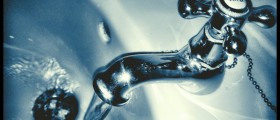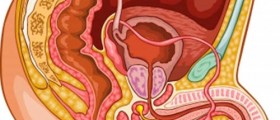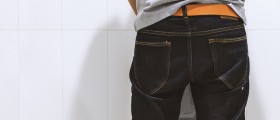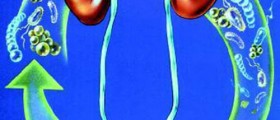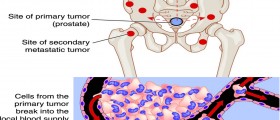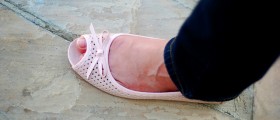Suspect - if you’re in the UK - we share the same surgeon ( from your comment re ‘Holep fame’ ).
Loading...
Glad that u found my reply helpful. I am actually from New Jersey, US. If u have further questions or concerns, plse post. Members of this forum are resourceful and helpful, for example, Blayneb, Bluster, Phillips, ... I got a lot of help from them.
More:
If I were u, I would be doing everything I could to increase the probability of success. It is horrible and life suffered if stricture keep reoccurring. Suggest after the procedure
1) u ask ur surgeon the length of the stricture(blockage) , location(near front or bladder) and whether it is located in a blood rich area as this info will determine the probability of new scar formation. Won’t change anything, but will keep u informed and prepare u what to expect,
2) ask ur surgeon (don’t let the nurse Make the decision) what is the optimum shortest time to remove the catheter as wearing catheter may cause new scar to form. Better yet ask can u tell from the urine passage and color to determine when the catheter can be removed
(i wish someone had told me this before my HoLEP, as I suspect my stricture was due to wearing the catheter for too long, 5 days and travelled with it.),
3) not to travel or travel long distance with the catheter to prevent rubbing and further injured the raw surface of the scar-removed site.
I assume that ur surgeon is a very experienced in HoLEP. If not, plse post.
Ur blockage seems to be completely blocking the urethra causing retention, more serious than I was. I had an opening of about 2mm allowing urine to pass.
Before HoLEP, I read tons of posts about its complications. Even though stricture is 5%, There are very few posts about stricture. Not sure why. There is another guest member (Neal?) who had his stricture removed. If he responses, his experience will give u another perspective.
Loading...
My surgeon is the most experienced Holep surgeon in the UK - so no concerns there.
I will be sure to take it very easy whilst catheter in situ - don’t intend to leave the house for the 5-7 days.
Will be sure to direct the questions you suggest to the surgeon - sincere thanks for the tip.
I am ‘immersing’ myself in as much information as possible. Suggestion that a course of steroids taken immediately the catheter removed can contribute to a better outcome?
Loading...
I had spend tons of time reading and researching about HoLEP before HoLEP, but very unfortunately, despite my effort, I did not learn the most crucial information. My ignorance has very serious consequences.
It seems to me it is not the issue of staying home for 5-7 days, but not having the catheter in there longer than necessary is the message I wish to convey to u. If u google urethra stricture, u will find that catheter is listed one of the causes of having stricture. As u can imagine, the rubber tube is constantly rubbing the newly operated surfaces, it can’t be good. There should be a scientific way to gauge when it is safe to remove the catheter. Different surgeons have different ideas, some remove it in 24 hours, some in 5 days. They can not be all correct. I suggest u discuss this issue before ur procedure. U have the right to question him and get educated about the procedure.
About steroid, I suggest after the corrective, u follow exactly what the surgeon wants u to do. It would not hurt to ask him:
1) from his patients, what is the success rate of stricture removal,
2) what are the techniques in his disposal (e.g. ballon, homium laser, etc....)
3) under what condition will each technique be used
U have the right to know and Knowing These answers will make u an informed patient.
Loading...
Loading...
A few questions if I may ( my surgery is to take place in Cambridge next week ):
1. How long did you retain a catheter post op?
2. Did you have to intermittently catheterise once the initial catheter was removed? ( whilst my surgeon referred to 7 days catheterisation he has not mentioned anything re subsequent catheterisation )
3. Were you given steroids ( either injected or by mouth ) - my research suggests this may be beneficial?
4. What was your recovery time ( Sod’s law - I have a foreign holiday already booked 18 days post op )?
5. How different was the blood loss - Holep v Urethrotomy? Just keen to manage expectations as I believe it to be significantly greater than Holep?
So sorry to pose multiple questions. Anything that helps me prepare ( was not concerned pre Holep but am getting stressed re this procedure ) very gratefully received.
Loading...
1. It had been intended that I would be catheterised for 3 days but after I was discharged about 24 hours after the op I suffered very severe bladder spasms on the journey home. I asked a neighbour who is a retired consultant gynecologist (don't laugh!) who suggested I phone the hospital straight away. They were excellent (it was a Sunday) and decided the catheter could come out immediately and sent a District Nurse as soon as they could who removed it. So it was in for about 30 hours in total.
2. No intermittent catheterisation was needed at all.
3. No steroids; in fact they weren't even mentioned.
4. Recovery time was very quick, in fact just the period to get completely over the general anaesthetic, so a couple of days. The euphoria of having such a good urine flow helped no doubt.
5. No blood loss to speak of I think and no pain either. I don't seem to suffer post-surgery pain in that area, having had a large spermatocele removed a few years earlier with no pain at all.
To sum up I would say the procedure is straightforward and recovery very rapid with the psychological boost that your strong urine stream is restored almost immediately.
I hope this helps and please keep in touch if you feel the need at any time. Who is your surgeon by the way?
Loading...
Consultant surgeon is Tev Aho ( of whom I cannot speak highly enough )
Loading...
I think that it is safe to travel 18 days after stricture removal if u don’t mind the lingering discomfort (if there is any). In comparison to HoLEP, most stricture removal surgeries are minor operations. Some HoLEP patients have greater than 200 g prostates and 50-80% would be removed by HoLEP. In my case, the stricture was just popped open by a balloon.
It seems to me that stricture (scar) forms slowly. In both mine and Nigel’s case, it took 2-4 months for us to realize unmistakably the urethra was blocked. The max flow rate Qmax was reduced from 20-30 cc/sec (which is typicall after HoLEP) to 2-4 cc/sec that is a factor of 5-10 slower. So Within a month after stricture removal, there is little chance that a new stricture (if there will be one) will be even noticeable or cause any problem.
why stricture has such a high recurrence rate? My understanding is: The endoscope or the (big) metal instrument used in HoLEP as well as the rubber tube of the catheter can injure the urethra surface and possibly on one or more surfaces that are prone to form scars when healed. These scars not only will not dissolved but will slowly grow and eventually completely block the urethra. When these scars are removed, the same surfaces where the scars were at are injured again. This is a no-win vicious circle. As a result, there is high probability that new scars will form again. This is the reason that why the recurrence rate is so high. I believe.
The only way to break this vicious cycle is to cut open the urethra, cut away the scarred tissues and replace them with healthy graft (from other part of the body?)
My son lives near Stanford U. He has a friend who is a very experienced urologist and a department chief. I asked my son to ask him what was my chance of not having the stricture to re-occur again. His answer was : length (shorter obviously is better), location (I think near the front and away from the bladder neck is better), whether it is at a vessel rich area(I think vessel rich Promote scar to grow.) . Knowing these facts won’t change anything, but the patient will understand his chance. Best to ask these questions right before the corrective surgery and get the answers right after the operation else the surgeon may not remember.
I agree with Nigel, there is critical knowledge about HoLEP which is hard to come up. Posts like I pee like a race horse are not very informative(just my personal view).
Loading...
More:
A critical question is how many times can the stricture removal surgery be repeated?
I had asked my HoLEP surgeon how many times I could do the stricture removal if the stricture re-occurred. If I remember correctly, his answer was 2-3 times more. Now I understand why, it is probably due to the vicious circle I mentioned above. If the scar keep coming back on the same site, there is no point in keep repeating the stricture removal operation again and again. The only thing that can be done next to treat the disease is the so called reconstruction surgery by cutting open the urethra.
I don’t recall able to find many posts on stricture. Nigel and my posts are the few posts that discuss stricture. If u know of other informative posts, plse let us know.
Both Nigel and I seem to have our stricture successfully removed. This give me hope that ur upcoming corrective surgery will be successful too. Good luck!!
Loading...
Don’t know if this is relevant to a stricture or at all indicative to the urethrotomy ( or anything else ) I am about to endure?
Any thoughts?
Loading...
Loading...
The only way to know that one has stricture is through the “urodynamic” test, in which a scope is inserted into the urethra (not recommended). Another way is the Qmax flow test, which I assume u had done. Right after HoLEP, if Qmax first increases to greater than 20cc/s, then later drops by a factor of 5-10 to less than 5cc/sec, it is most likely that the person has stricture.
Loading...
The surgeon, after ‘internal examination’ decided to proceed with dilatation in preference to urethrotomy.
He explained to me post procedure that this was the most appropriate course of action given the size ( ‘very short’ ) & location ( bulbar & well away from sphincter ).
Although the hospital notes on the process describe a 1 to 2 day hospital stay I was cleared to leave just 2 hours after leaving the recovery room.
I have a Foley catheter fitted ( 20 gauge - don’t know if that’s relevant ) & this is to be removed after 7 days ( with no mention of self catheterisation afterwards [ fingers crossed ] ).
All in all not a bad experience although last evening ( Shortly after arriving home ) I suffered from a horrendous - almost perpetual - urge to urinate. I’m hopeful that the worst is over - having had a reasonable night ( with the help of attaching a bag to eradicate any mental issues of needing to visit the toilet ).
Hope this may be of some benefit to anyone that is planning such a procedure in the future.
Sincere thanks to those that kindly offered their advice & experiences over the last couple of weeks.
Loading...
“The surgeon, after ‘internal examination’ decided to proceed with dilatation in preference to urethrotomy.
He explained to me post procedure that this was the most appropriate course of action given the size ( ‘very short’ ) & location ( bulbar & well away from sphincter ).’
Given that we are all unlucky to have stricture after HoLEP, this seems to be the best outcome one could hope for. I believe that dilation would reduce the chance of forming new scar vs urethrotomy; short would reduce the chance of recurrence and away from sphincter means that the stricture was not located in a danger zone. All these facts suggest that the chance stricture will recur is very low.
During followup, u may wish to ask the surgeon after how long u can be sure that the stricture will not recur again.
Loading...




